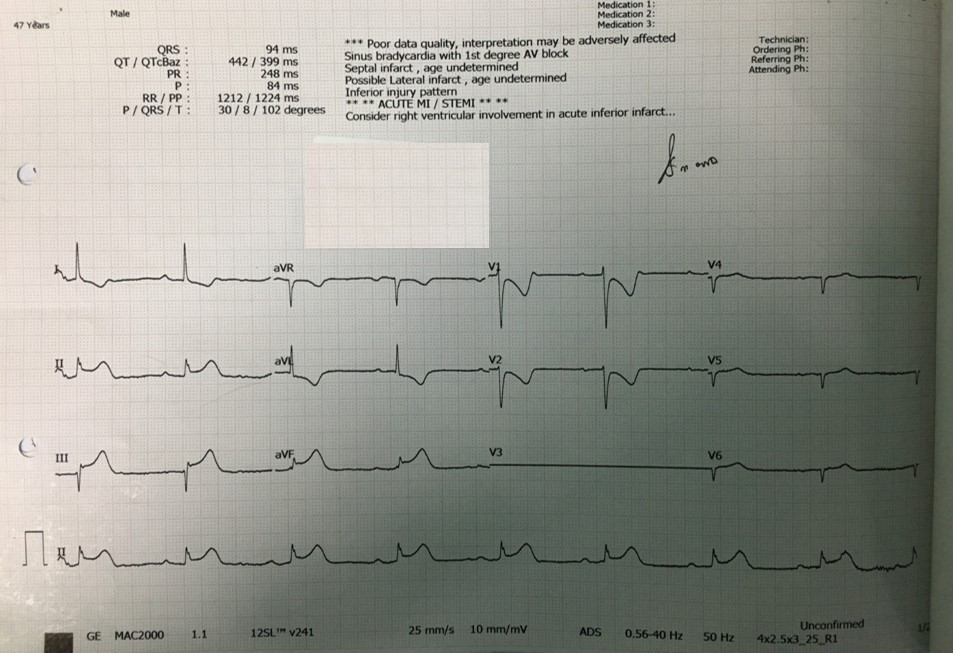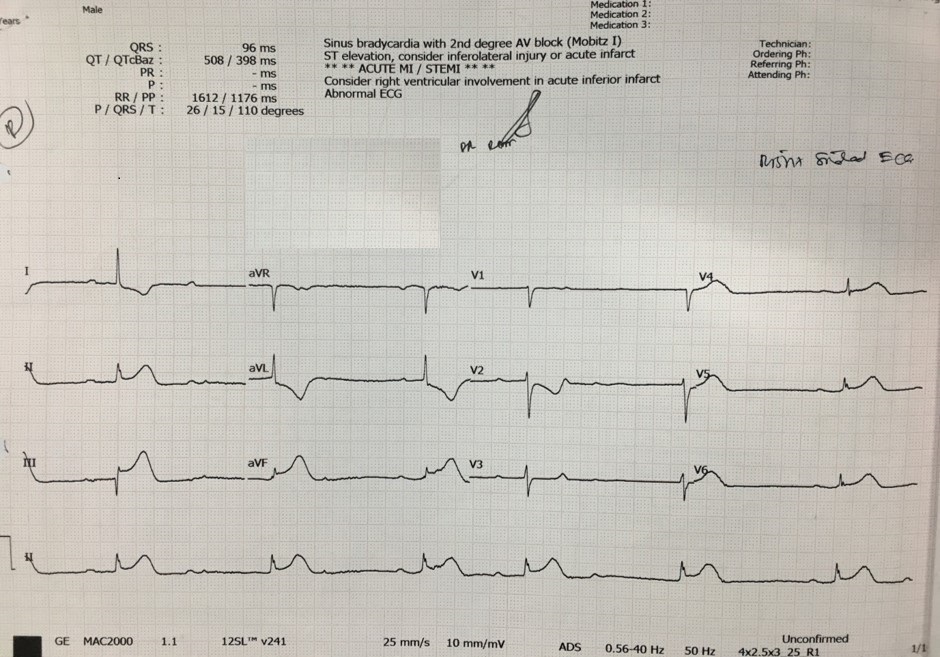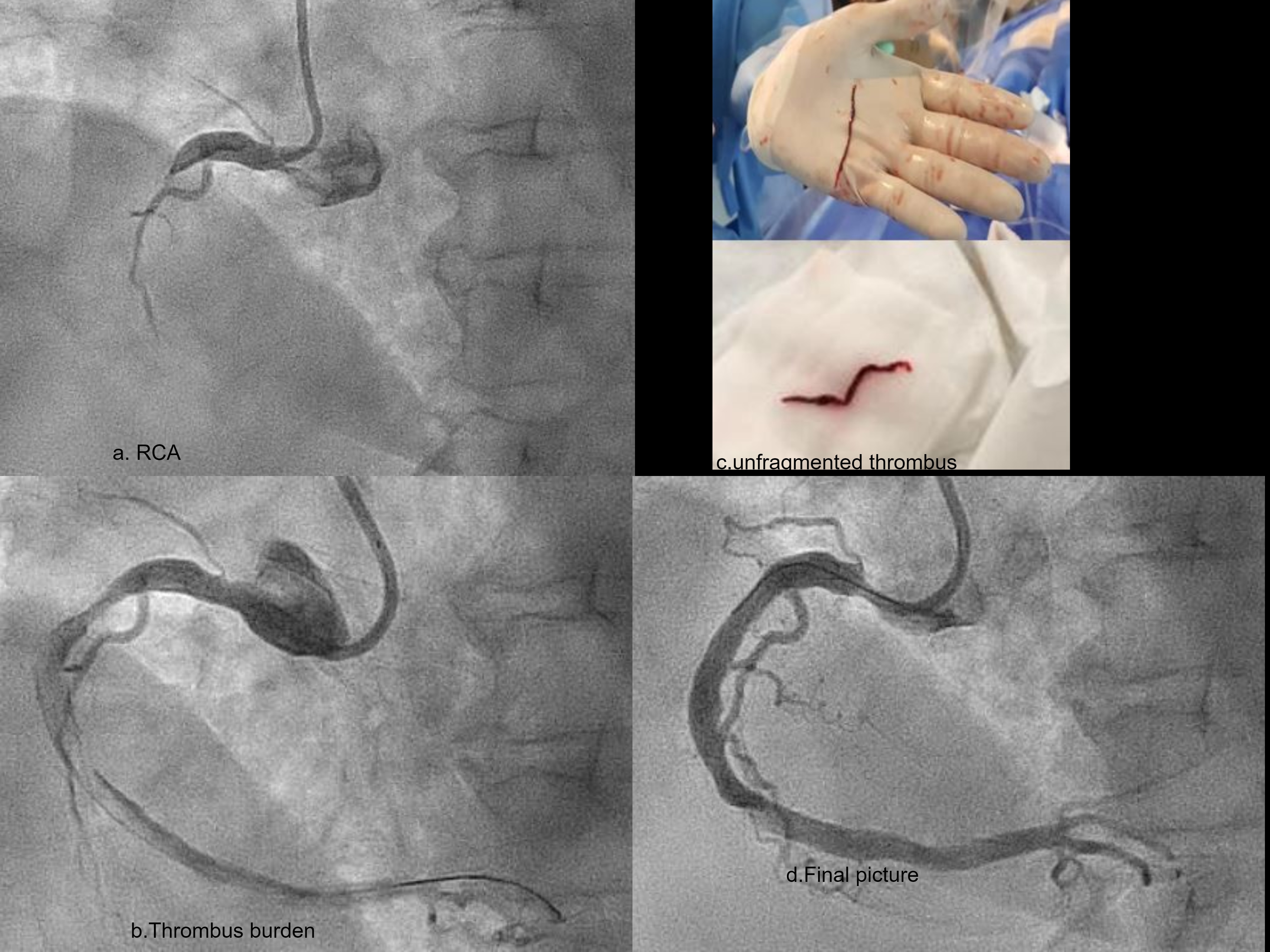Lots of interesting abstracts and cases were submitted for TCTAP & AP VALVES 2020 Virtual. Below are accepted ones after thoroughly reviewed by our official reviewers. Don¡¯t miss the opportunity to explore your knowledge and interact with authors as well as virtual participants by sharing your opinion!
* The E-Science Station is well-optimized for PC.
We highly recommend you use a desktop computer or laptop to browse E-posters.
CASE20191030_018
| CORONARY - Adjunctive Procedures (thrombectomy, atherectomy, special balloons) | |
| Novel Mechanical Thrombosuction in an Ectatic Right Coronary Artery with Large Thrombus Burden | |
| Prabesh Neupane1, Abdul Raqib Abd Ghani2, Abdul Muizz Abd Malek2, Shathiskumar Govindaraju2, Kamaraj Selvaraj3 | |
| Shahid Dharmabhakta National Transplant Centre, Nepal1, Hospital Serdang, Malaysia2, Sultan Idris Shah Serdang Hospital, Malaysia3, | |
|
[Clinical Information]
- Patient initials or identifier number:
Mrs KI58999
-Relevant clinical history and physical exam:
A 67 years female with underlying hypertension and dyslipidemia presented to our centre through the Primary PCI network with sudden onset of left sided chest pain associated with diaphoresis and dizziness. Painscore 8/10, Pulse 40bpm regular,BP 100/70mmhg, chest: clear on auscultation, Oxygen Saturation 96% in room air.
-Relevant test results prior to catheterization:
First ECG revealed sinus rhythm; first degree AV block with Heart rate of 50 bpm; ST elevation in Leads II,III,AVF with ST depression in leads I,aVL,V1,V2.(figure 1) Subsequent right sided ECG revealed second degree AV block (mobitz I)(figure 2 )
  - Relevant catheterization findings:
Diagnostic coronary angiography was done with a 5F optitorque catheter via right radial artery. Left coronary artery angiogram revealed 80% stenosis in mid LAD, 80% stenosis in proximal ramus intermedius and minor disease in non-dominant LCX.(video 1) Right coronary angiogram revealed a large ectatic RCA with total thrombotic occlusion at proximal segment.(video 2)
|
|
|
[Interventional Management]
- Procedural step:
Decision to proceed with PCI to RCA was made. Patient received total 8000 IU of unfractionated heparin. RCA was engaged with a 6 french SAL1.0 guiding catheter(launcher,Medtronic) and lesion crossed with Sionblue Wire(ASAHI,Intecc). Predilatation of the lesion with 3.0x15 mm SC balloon was done, after which TIMI I flow with a large thrombus extending up to distal RCA was noticed(video 1). In view of Large Thrombus Burden (TIMI LTB4),loading dose of Intracoronary Tirofiban was given and a decision to use mechanical thrombosuction was made. Thrombus aspiration was done with a 5 french mechanical coronary power aspiration system (Indigo¢ç System CAT¢â RX Aspiration Catheter, Penumbra Inc,USA). Aspiration extracted a non-fragmented massive red thrombus . Thrombosuction was uneventful with TIMI 3 flow seen post aspiration and good myocardial blush in a Dominant RCA(video 2). Lesion was further predilated with a 3.0 x15 mm SC baloon @16 atm. The proximal RCA was stented with a self-apposing STENTYS XPosition 3.0 - 3.5 mm x 27 mm @ 12 atm (Stentys S.A,Paris,France). Postdilation was done with a 4.0 x15 mm NC balloon @18 atm with good angiographic result (picture 3).No Immediate complications were noted with restoration of sinus rhythm and ST segment resolution on ECG. Patient was discharged well with no further events during her hospital stay.
 - Case Summary:
Percutaneous management of lesions with large thrombus burden is challenging in the setting of PPCI for STEMI. We present a case where a novel coronary mechanical thrombosuction device was safe and effective in complete extraction of a huge thrombus from an ectatic coronary artery to achieve complete revascularization. Studies including TAPAS demonstrated better reperfusion and clinical outcomes with thrombus aspiration. The higher stroke risk seen in TOTAL study could possibly be avoided with an advancement in technique as seen with this device. Further studies with improved devices are required to evaluate the efficacy and safety of mechanical thrombosuction in high thrombus burden cases.
|
|